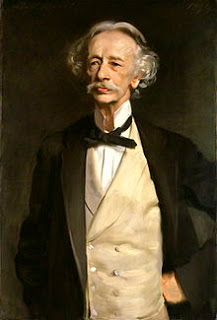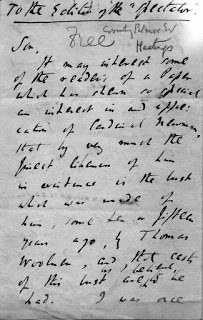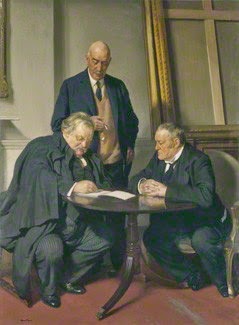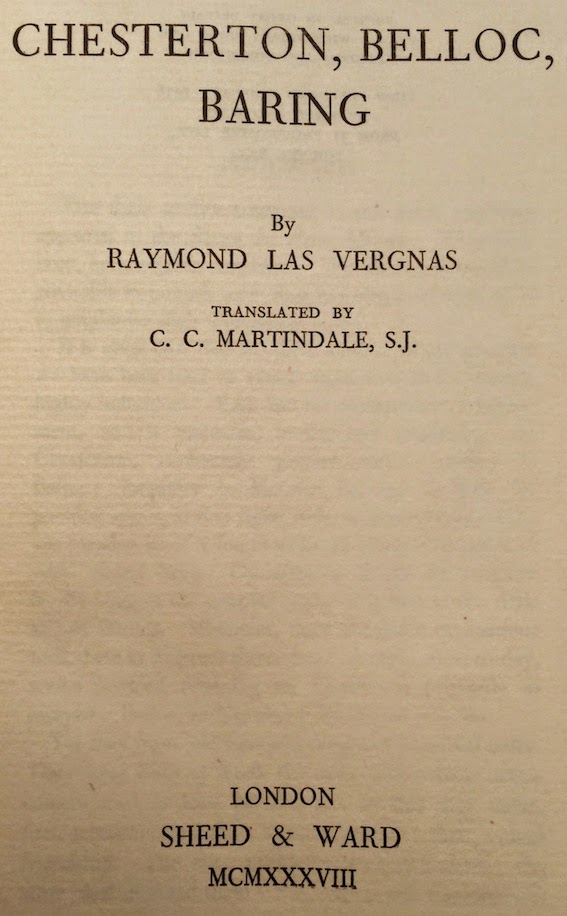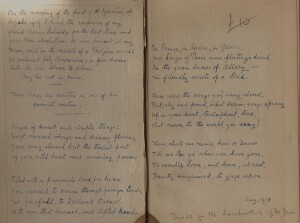 Inscribed on the inner board and flyleaf of a copy of the posthumously published collection Songs of Peace(1917) by the Irish poet and soldier Francis Ledwidge is this note and commemorative verse composed by Father Francis Charles Devas, the Jesuit chaplain of his battalion who had befriended him.
Inscribed on the inner board and flyleaf of a copy of the posthumously published collection Songs of Peace(1917) by the Irish poet and soldier Francis Ledwidge is this note and commemorative verse composed by Father Francis Charles Devas, the Jesuit chaplain of his battalion who had befriended him.
Corporal Ledwidge was just thirty years old when, ‘ on the morning of the feast of St Ignatius of Loyola’ ( in the words of Devas ) he was ‘ blown to bits ‘ by a German shell while sitting on a mud bank in a Belgian trench drinking a mug of tea with his mates in the 1stBattalion Royal Inniskilling Fusiliers. Just a few hours before, Devas had conducted Mass in a wood not far from the battlefield. Ledwidge was there and Devas had heard his confession, given him absolution and performed Holy Communion with him.
Back in London, Ledwidge’s publisher, Herbert Jenkins, who had brought out his debut collection, Songs of the Fieldstwo years earlier, were preparing Songs of Peacefor the press. It eventually appeared a few weeks following the poet’s death, with a Introduction by his great supporter in Ireland, Lord Dunsany, dated September 1916, in which he praised the simplicity of his protege’s verse, his yearning for Ireland and his courage in fighting for the cause of peace.
‘…this devotion to the fields of Meath that, in nearly all his songs, from such far places brings his spirit home, like the instinct that has been given o the swallows, seems to be the key-note of the book…’ Continue reading




